This week’s featured post is the second time I’ve highlighted something by Sroyon Mukherjee, this time a part 1 of a project showing a selection of strange pinhole camera creations. Anyone with a box, a hole, and some film can make a pinhole camera, but simply making them out of a box apparently was boring as can be seen in the huge gallery of interesting pinhole cameras that Sroyon compiled from a pinhole Facebook group that he is in.
Sroyon’s article features some very bizarre designs from ones with exposed film cassettes, ones made out of shoe boxes, and even a strange “multi-lens” honeycomb style box.
Without a doubt, the most unique, strange, bizarre, and any other number of adjectives, is the pistachio cam. A camera made out of a pistachio nut. Whoever made that must be nuts! pun intended
This article is just part one and you bet I’m excited to see what is included in part two. Maybe there will be a pinhole camera made out of a piece of bread!
Here are more great posts from some of my favorite sites:
You better like pinhole cameras as today I have a two-fer with a EMULSIVE post about a 3D printed panoramic pinhole camera called the Goodman Labs Scura. The article accurately refers to it as an ‘experience’ rather than a straightforward review as building it is part of the fun. If you like building things that actually serve a purpose, this is a project for you. Plus, with panoramic cameras, you get images that you can’t get with as many others out there. The kit costs $84 for all of the parts, or if you have a 3D printer, you can purchase just the plans and make everything yourself, bringing down the price.
With the state of world affairs from the global pandemic, climate change, and the Black Lives Matter movement, there’s quite a number of protests to photograph, and this week Theo from photothinking.com shares some shots of a Sydney protest from last year, shot on a Nikon F4S. Shooting other people always comes with a certain level of risk, especially when you’re pointing a camera at people protesting something they’re passionate about, but this article not only has a huge number of excellent images created by a camera designed to create excellent images, but it also offers some good tips for anyone wanting to do the same thing today.
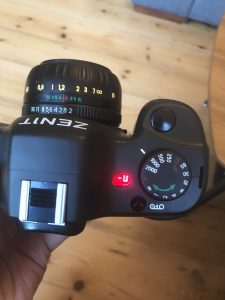
There are only a couple film SLRs out there that can claim to be younger than Facebook, and it’s probably not a surprise that one of them is a Zenit. A brand that seems to transcend time, Zenit cameras have been produced in the tens of millions since the early 1950s. There were so many variants out there that you could be collecting cameras for a decade and occasionally run into one you’ve never heard of. One that I had never heard of is the Zenit-KM Plus which Stephen Dowling from kosmofoto gives a look at this week. Featuring a modern plastic body with curves galore, the Pentax K mount, shutter speeds from 1 to 1/2000 and the coolest looking exposure counter I’ve ever seen, this is a camera that I must add to my wish list!
Whenever I think of the name “Praktica”, one of a zillion M42 screw mount SLRs immediately enters into my mind, but not everyone knows that later in the company’s existence, the Praktica brand was applied to several other point and shoot cameras inspired by companies from Cosina to Olympus. This week, we have a review of the Praktica Elite from Alan Duncan at Canny Photos, a camera that bears a striking resemblance to the clam shell Olympus mju. The Elite wasn’t actually built by Olympus, but it also doesn’t cost as much as one either. Alan’s review of the Elite gives a bit of history, a review of it’s use, and some sample pics of this obscure, but interesting mju-clone that’s worth checking out!
Lately I’ve been hearing more and more about people shooting sound recording film. Such films exist that look and function similar to any other 35mm film, but are designed to optically record audio. But what happens when you try to put an image on audio film? Well, you get an image. This week Alex Luyckx gives a hard look at Film Washi S, an ASA 50 speed black and white sound recording film. As he always does, Alex’s film reviews are the best out there. I love how he not only shows some sample images, but also talks about how he developed them and uses different developers. These images are a bit more contrasty than I like, but there’s also almost no grain, which I love.
Last year, as an April Fool’s Joke, I thought it would be funny to write an overly glowing review of one of those fakey looking plastic SLRs with the huge flash made in China. There’s a million of them out there, and the one I chose was called the Canon DL-5000. Of course the camera isn’t made by Canon, and could barely be considered a camera. I followed up that review with an honest one tearing into (literally) the camera, exposing it for the piece of junk it is. This week, Alan Duncan from Canny Cameras looks at a similar hunk of junk called the Tamashi FMD QP8000. As I did, Alan attempts to give it a serious review, and to his credit, Alan did a great job, the camera however, well, just read the review.
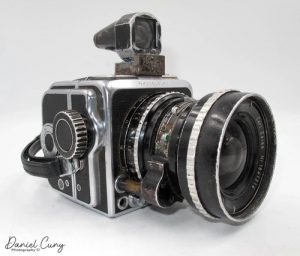
Making it’s first appearance in one of my Recommended Reading posts is a new blogger named Daniel Curry who I will definitely need to follow in the future. This week, Dan looks at the Hasselblad Super Wide, a variant of Hasselblad’s 1000F with a fixed Zeiss 38mm f4.5 Biogon lens, leaf shutter, and no reflex housing. The Super Wide was only made for two years and has become extremely collectible today. Thankfully, with sites like Dan’s we can live vicariously through other collectors and read about what it might be like to own one of these beauties!
In my last Recommended Reading, I highlighted a couple articles discussing ways to keep shooting film on a budget, and this time around, we have Jim Grey’s take on the topic. Featuring his own tips and tricks for acquiring cameras, film, and processing that won’t break the bank, you officially have no more excuses to shoot film! If there’s one thing I don’t agree with Jim on is his estimate of $250 to get everything you need to develop your own film. I’ve found you can use many of the same tricks as getting cheap cameras for getting cheap dark room equipment. Between garage and estate sales, and eBay, I’ve spent less than $100 on all of my tanks, clips, and trays, and with a $8 Amazon thermometer, it can be done for much cheaper than he suggests!
Pocket Instamatic 110 cameras often don’t get a lot of love in the collector community. Rightfully so, most 110 cameras were very cheaply made, with simple lenses and shutters, little to no manual control, and with a very limited selection of 110 films to select from today, you can understand why not everyone gets excited about the format. This week, Eric from Aperture Preview looks at the weather resistant Minolta Weathermatic A, an attractive, all yellow 110 camera that is small enough to be useful at the beach. The camera has a reasonably fast f/3.5 lens, and is water rated to depths of 5 meters so the next time you’re looking to shoot some underwater photos you may want to consider this as an option.
Do you like 100 speed films? Do you like black and white film? If you can say yes to both of those questions, then this week’s roundup at the Random Photo Blog of 27 different ISO 100 black and white films is for you. Short one paragraph summaries of everything from mass produced films like Kodak TMax 100 to boutique films like Lomography Potsdam Kino 100 are all accounted for here, as the ‘de facto’ buyer’s guide for all your monochrome 100 desires!
Always one to find good camera bargains, Peggy Marsh reviews the AGFA Optima 335 Sensor, an inexpensive point and shoot camera with a good lens and a huge viewfinder. This camera is not in any way related to AGFA’s earlier Optima rangefinders and SLRs, but is nonetheless interesting as it offers a shooting experience not unlike much more expensive point and shoot cameras like the Olympus mju and Yashica T4. The camera produces wonderful results and with it’s huge viewfinder, is very easy to use and a camera that is officially on my radar!
As has become my usual way of closing out these Recommended Reading posts, I have a YouTube video for you to watch, but this time it’s actually vintage camera related. Stephen Dowling from kosmofoto has been hard at work on what he’s calling a Beginner’s Guide to Soviet Cameras.
This video that he produced with his friend John who is a professional videographer, walks through some of the best Soviet cameras for the beginner collector. Stephen’s choices of cameras are excellent and are the same models I would have suggested if I would have made a video like this. All of the models are cheap, plentiful, and still capable of excellent images.
Stephen says this video will have an accompanying written article too, but for now, he gave me permission to share the link below in it’s world premiere!
Since I already have a large selection of Soviet gear, this video doesn’t give me the usual GAS like many of these posts I share do, but watching this video, I’m getting “YouTube GAS”. I really want to start making some of my own videos for this site (foreshadowing…)

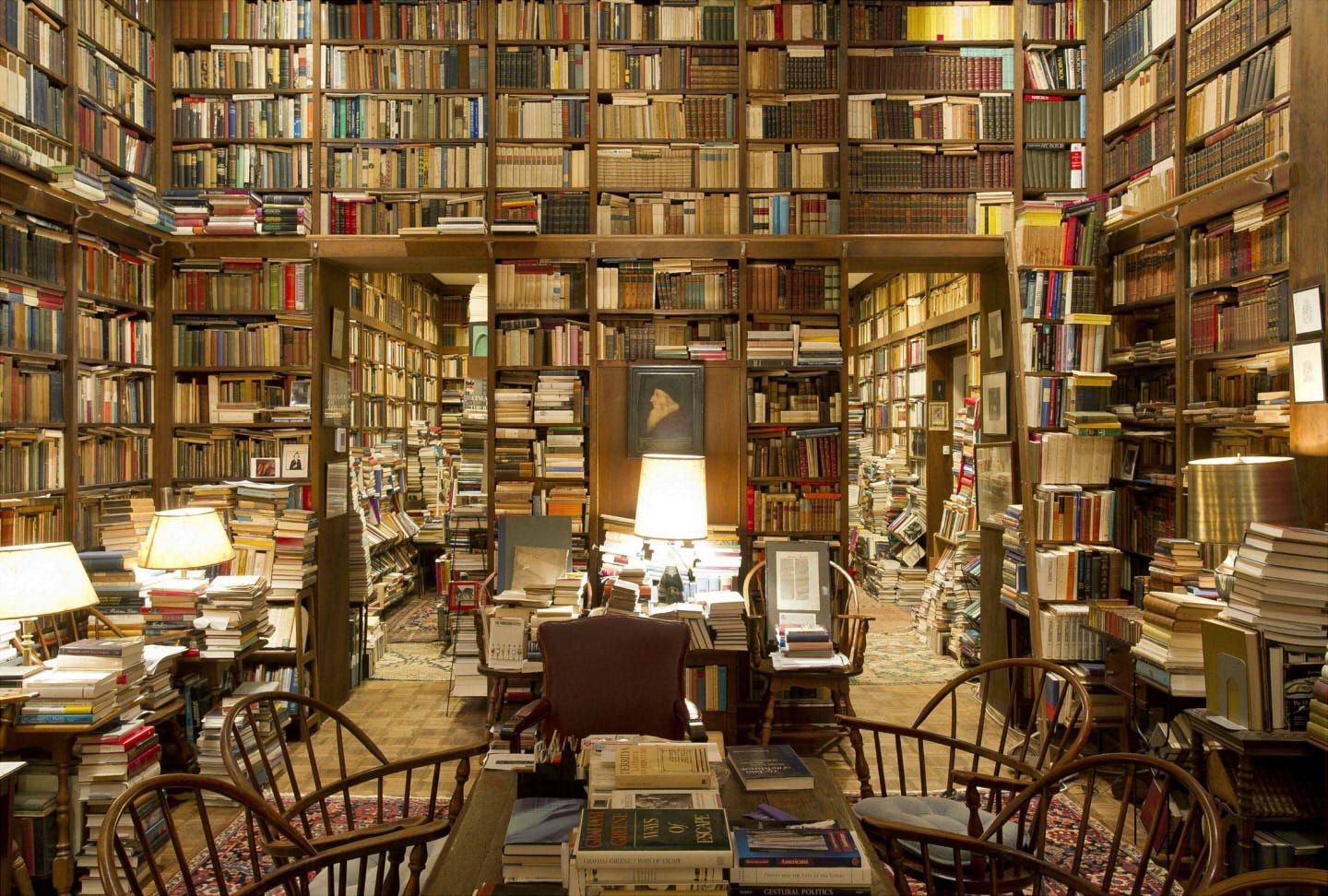
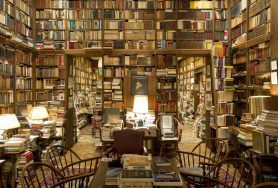
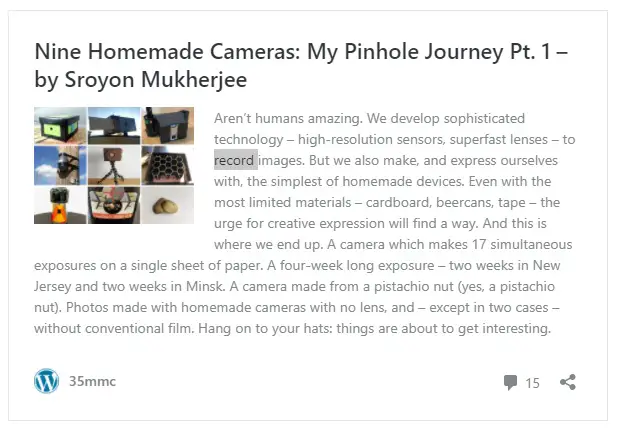
A good amount of the $250 for home development involves buying a scanner, without which you have negatives you can’t share online!
Thanks for featuring my pinhole article! Pinhole camera from bread… hmm, sounds doable. Would need a few slices though, to make it thick enough. Hollow out the middle, put a pinhole on one end and photo paper on the other, and cover with aluminium foil or other opaque material. Maybe I’ll try!